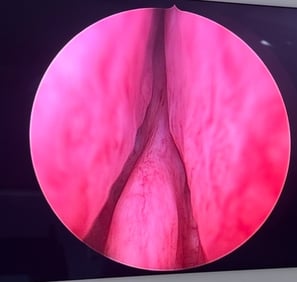Recent advances in Prostate enlargement Disease


Title: Advancements in Prostate enlargement Treatment: A Beacon of Hope for Patients
Introduction: Prostate cancer is one of the most prevalent cancers among men worldwide, with a significant impact on their health and quality of life. Over the years, medical science has made remarkable strides in understanding and treating this disease. Recent advancements in prostate cancer treatment have provided new hope for patients, offering more effective therapies with fewer side effects. In this blog post, we'll delve into some of the cutting-edge developments in prostate cancer treatment that are revolutionizing patient care.
Precision Medicine: One of the most significant breakthroughs in prostate cancer treatment is the advent of precision medicine. This approach tailors treatment plans to each patient's unique genetic makeup, tumor characteristics, and other individual factors. By analyzing specific genetic mutations or biomarkers associated with prostate cancer, doctors can prescribe targeted therapies that are more likely to be effective and less toxic than traditional treatments. Precision medicine not only improves treatment outcomes but also reduces the risk of unnecessary side effects.
Advanced Imaging Techniques: Recent advances in imaging technology have transformed the way prostate cancer is diagnosed and treated. Techniques such as multiparametric magnetic resonance imaging (mpMRI) and prostate-specific membrane antigen (PSMA) PET scans enable doctors to detect and localize tumors with greater accuracy than ever before. This allows for more precise biopsy targeting, improved staging of the disease, and better treatment planning. Advanced imaging techniques also play a crucial role in monitoring treatment response and detecting disease recurrence earlier, leading to more timely interventions and improved outcomes for patients.
Minimally Invasive Surgeries: Traditional surgical approaches for prostate cancer, such as open radical prostatectomy, can be associated with significant risks and long recovery times. However, recent advances in minimally invasive surgical techniques have revolutionized prostate cancer surgery, offering patients less invasive options with faster recovery and fewer complications. Robotic-assisted laparoscopic prostatectomy (RALP) and laparoscopic radical prostatectomy (LRP) are two such techniques that use smaller incisions, precision instruments, and robotic assistance to remove the prostate gland while preserving surrounding tissues and minimizing damage to nearby nerves and blood vessels. Minimally invasive surgeries result in shorter hospital stays, reduced pain, and quicker return to normal activities for patients.
Focal Therapy: Focal therapy is an emerging treatment approach that targets only the cancerous areas of the prostate while sparing healthy tissue. Unlike traditional treatments like radical prostatectomy or whole-gland radiation therapy, which can cause significant side effects such as urinary incontinence and erectile dysfunction, focal therapy aims to minimize these risks by precisely targeting the tumor with techniques like high-intensity focused ultrasound (HIFU), cryotherapy, or laser ablation. Focal therapy is particularly suitable for patients with low to intermediate-risk prostate cancer who wish to preserve their quality of life while effectively treating the disease.
Immunotherapy and Targeted Therapies: Immunotherapy and targeted therapies have revolutionized the treatment landscape for many types of cancer, including prostate cancer. These therapies harness the power of the immune system or target specific molecular pathways involved in cancer growth and progression. For example, immune checkpoint inhibitors such as pembrolizumab and nivolumab have shown promising results in clinical trials for advanced prostate cancer, offering new hope for patients with aggressive or treatment-resistant disease. Similarly, targeted therapies like PARP inhibitors and androgen receptor inhibitors have demonstrated efficacy in specific subsets of prostate cancer patients, paving the way for personalized treatment approaches tailored to each individual's tumor biology.
Conclusion: The field of prostate cancer treatment has witnessed remarkable advancements in recent years, offering new hope and improved outcomes for patients. From precision medicine and advanced imaging techniques to minimally invasive surgeries, focal therapy, and targeted therapies, these innovations are transforming the way prostate cancer is diagnosed and treated. As researchers continue to unravel the complexities of this disease and develop novel therapeutic strategies, the future looks brighter than ever for prostate cancer patients, with the promise of more effective treatments and better quality of life.
